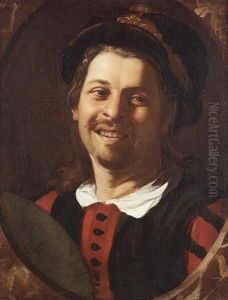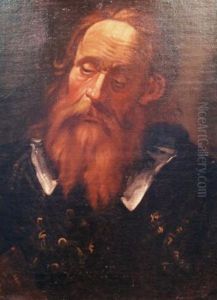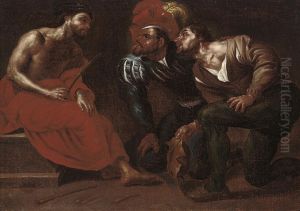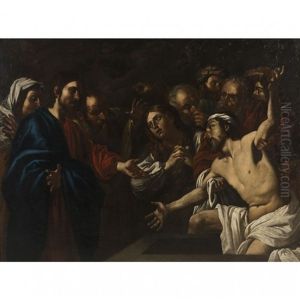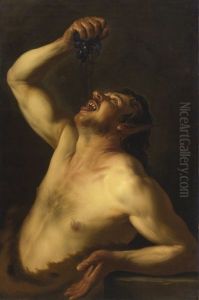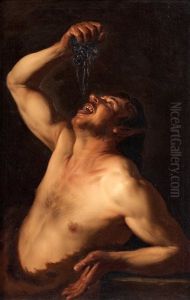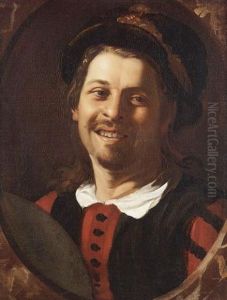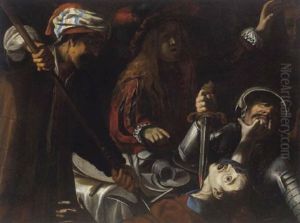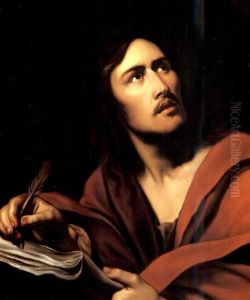David De Haen Paintings
David De Haen was a Dutch painter born in 1585 in Rotterdam, Netherlands. While there is not an abundance of information about his early life and training, it is known that he was active during the early 17th century and was a contemporary of other Dutch artists of the so-called 'Golden Age' of Dutch painting.
De Haen is primarily recognized for his work in Rome, where he became associated with the group of Northern artists known as the Bentvueghels, a society of mostly Dutch and Flemish artists working in Rome. The Bentvueghels were known for adopting nicknames (called 'bentnames'), and they celebrated the initiation of new members with festivities that often included excessive drinking and boisterous behavior. It is not known what De Haen’s ‘bentname’ was, or if he indeed had one.
His artistry was influenced by the Roman environment and the works of Caravaggio, whose style was characterized by dramatic chiaroscuro and realism. De Haen's work demonstrates a keen ability to capture light and shadow, as well as a strong sense for naturalism, which was a significant departure from the mannerist style that had been popular in the late 16th century.
Unfortunately, David De Haen’s career was cut short when he died at the young age of 37 in 1622. His exact cause of death is not documented, but it was not uncommon for artists of that period to live short lives, often due to the harsh conditions and the prevalence of diseases. The body of work he left behind is not extensive, and as a result, he is not as well-known as some of his contemporaries. Nonetheless, his contributions to the Dutch Golden Age of painting, particularly his influence in the realm of Caravaggisti, are noted by art historians.
De Haen's works occasionally come to light in art historical research and through auction sales, which has helped to gradually piece together a picture of his oeuvre. As with many artists of his time, the full breadth of his talent is likely underrepresented in the historical record, as many works have been lost or remain attributed to more prominent figures of his era.
